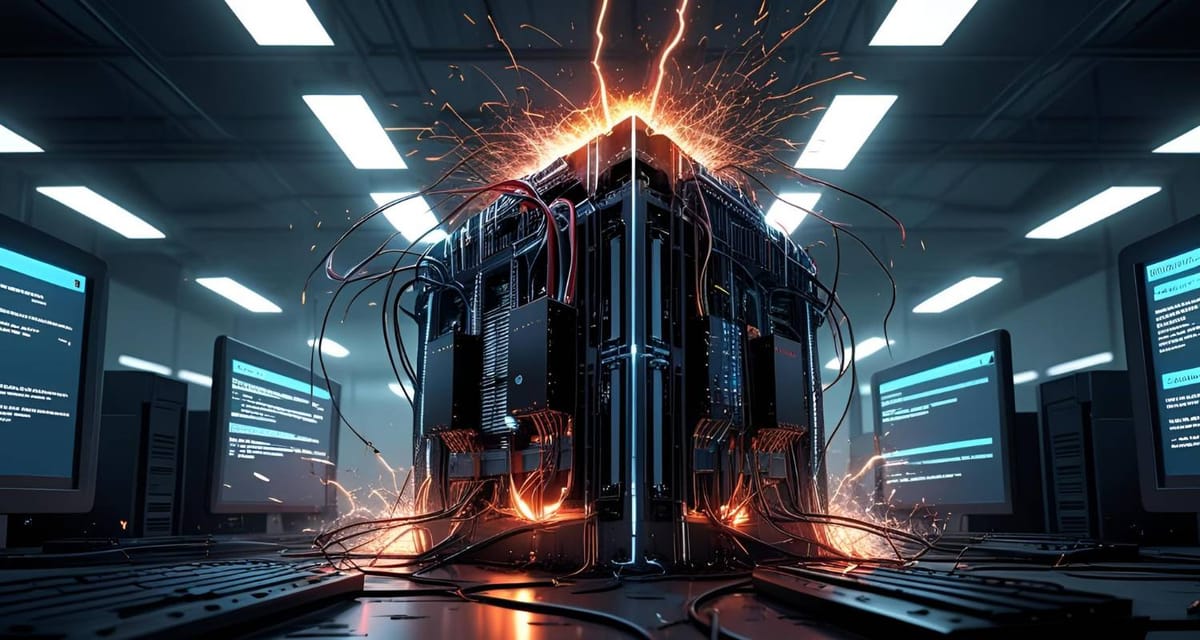- Atomic Brief
- Posts
- ⚛️ Nuclear meets GPUs | Wall Street steps in | Montana’s $1B AI gamble
⚛️ Nuclear meets GPUs | Wall Street steps in | Montana’s $1B AI gamble
This Week in Atomic Brief – Where compute meets the core.
Weekly roundup
🔋 Nuclear Moves
Apollo plugs a $6B hole at Hinkley Point C
Private-credit giant Apollo Global will lend £4.5B (~$6B) to keep the UK’s delayed EPR reactor project on track. The signal: Wall Street’s ready to bankroll Western nuclear, especially where governments stumble.
→ Why it matters: Nuclear’s morphing into a long-term infrastructure yield play, just like toll roads or fiber networks.
Rosatom woos Uzbekistan (again)
Russia inked a new deal to study a twin-VVER-1000 reactor station near Tashkent, deepening its nuclear ties in Central Asia after earlier SMR talks.
→ Why it matters: This is energy diplomacy 101. While the West debates subsidies, Rosatom signs MoUs. It’s a long game for electrons—and influence.
EAGLES-300 takes flight
A new European consortium wants to commercialize a 350 MWe lead-cooled SMR by 2035. Think molten lead, high heat, and hydrogen co-production.
→ Why it matters: This Gen IV design isn’t just about grid power—it’s process heat, industrial flexibility, and a bet on modular heat + compute futures.
TerraPower raises $650M
Bill Gates’ fission startup landed a fresh round led by Nvidia’s NVentures and HD Hyundai, pushing total raised to $1.4B. Their Natrium demo in Wyoming just got a lot more real.
→ Why it matters: Nvidia backing nuclear? That’s the GPU → energy flywheel in full effect. This is AI infra + clean baseload, bundled into one capital stack.
Microsoft signs up for Three Mile Island power
Constellation will restart the TMI-1 reactor, with Microsoft buying output for its U.S. data centers.
→ Why it matters: First case of a revived reactor getting routed straight into hyperscale compute demand.
Uranium stocks pop
Cameco is up 36% this month, with BWX Tech and GE Vernova also rallying.
→ Why it matters: Wall Street is pricing in a long-haul nuclear buildout across both fission and finance.
🖥️ Compute + Data-Center Watch
📈 Data-center capex up 53% YoY
New Dell’Oro data shows global spend hit $134B in Q1, driven by hyperscaler GPU demand. Blackwell chips and custom silicon are fueling the surge—and analysts expect another 30% bump in 2025.
→ Why it matters: These are not just server closets—they’re the power-hungry backbone of tomorrow’s models. And every megawatt is now a competitive edge.
🏔️ Montana’s hyperscale moonshot
Ardent TAC is planning a $1B campus in Great Falls, seeking up to 600 MW of power. If approved, it’s the biggest tech-infra play in Montana’s history.
→ Why it matters: Think wide-open land, cool air, and wind power. This is what an ex-urban AI infra grab looks like—and it’s coming to your grid.
🇪🇸 Siemens builds a new hub in Spain
A new innovation center in Madrid + Aragón aims to position Spain as a Southern European data gateway. Thirty high-skill jobs added. More importantly? A test case for regional “AI clusters.”
→ Why it matters: Energy-rich, politically stable regions with land and latency proximity are now economic battlegrounds.
Signals from the Stack
Capital convergence: Nuclear and AI are no longer siloed sectors. The same firms are betting on both and treating them like a single industrial flywheel.
Geopolitical divergence: Rosatom vs Apollo = state-backed influence vs private-capital patchwork. Both are building the next energy regime.
Regional arbitrage: Montana. Madrid. Tashkent. Compute × kilowatts is redrawing the map faster than policy can catch up.
Infra convergence is real: From Microsoft buying revived nuclear to Nvidia funding reactors, AI and energy are no longer separate markets.
Geopolitical divergence is widening: Rosatom and Westinghouse are playing different long games, but both are building influence, one reactor at a time.
Local frictions are rising: Zoning headaches, taxpayer blowback, and grid congestion are shaping where the next 100 hyperscale sites go.
On-site generation is the next frontier: The race to decouple from overloaded grids is just beginning—whoever controls clean, local watts wins.
Other Reads:
That’s it for this week.
That’s the brief.
If you enjoyed this…Forward to a colleague who thinks GPUs run on vibes.

